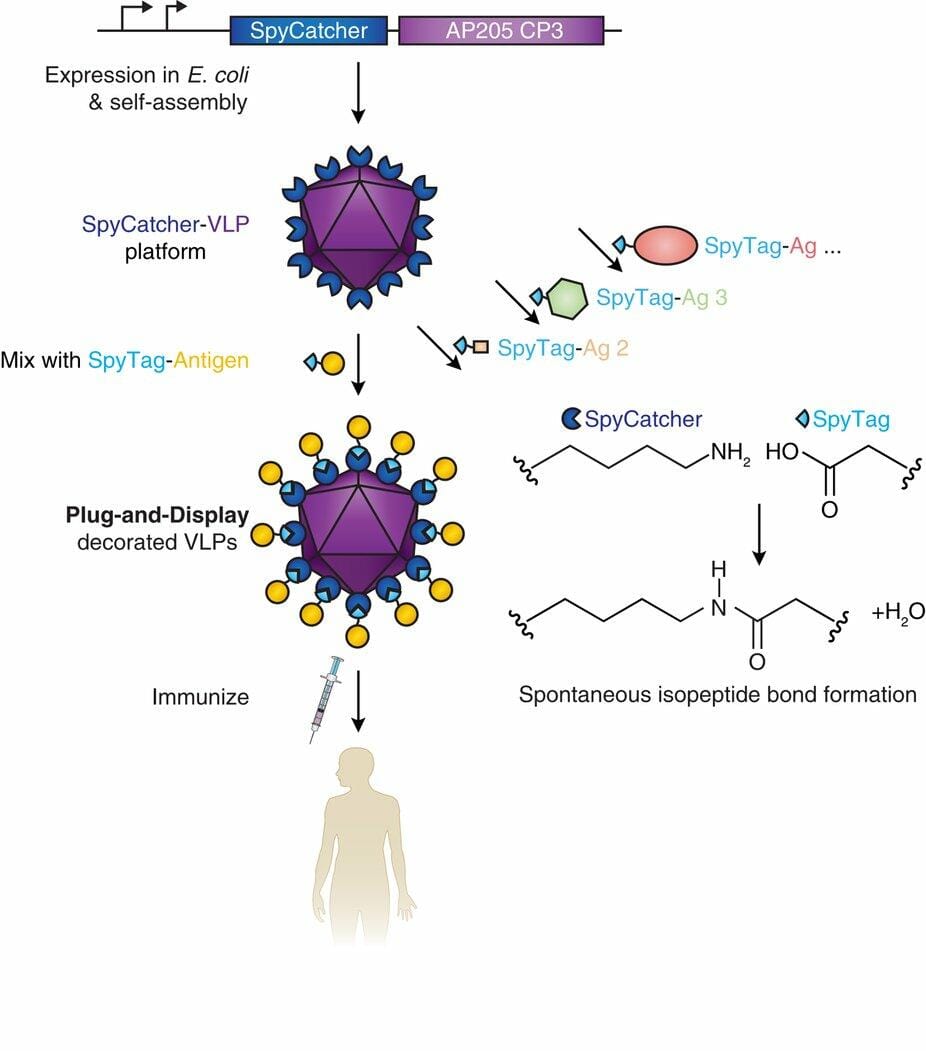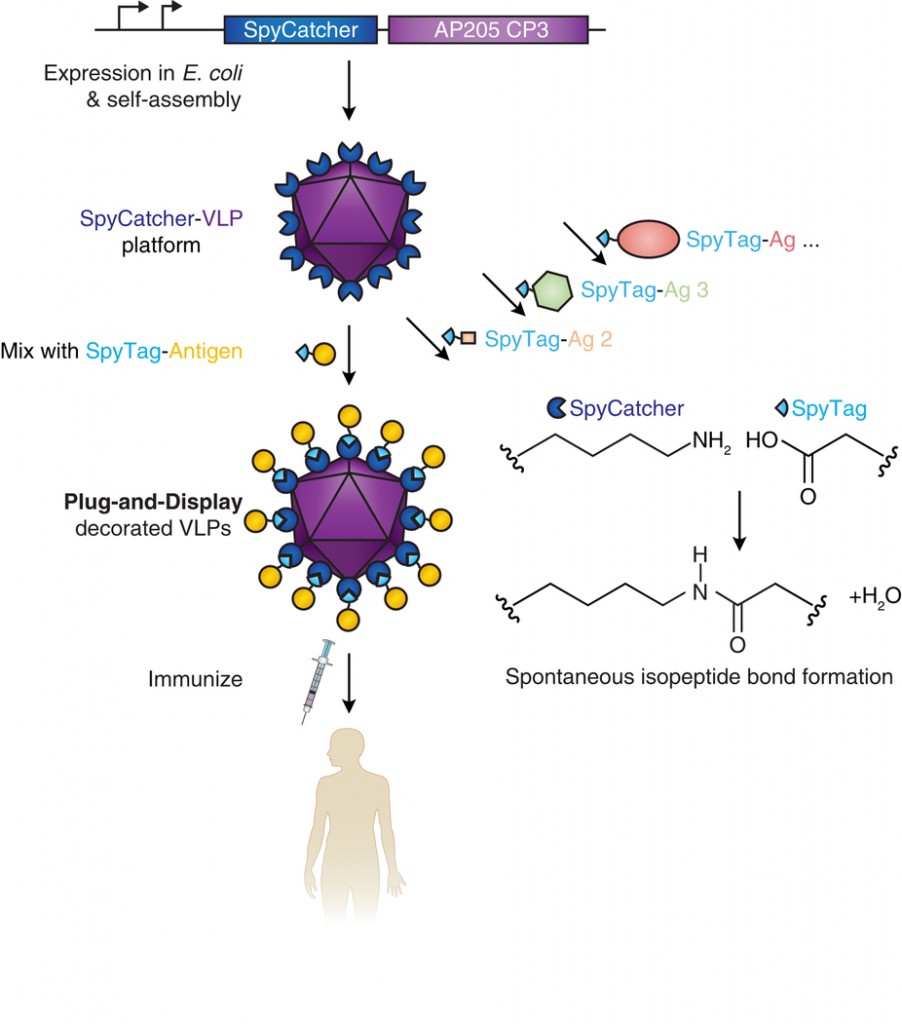Proteins That Act as Superglue Connect Virus-Like Particles to Epitopes

Researchers from Oxford University have developed a new technique to create new vaccines faster and more effectively. The scientists used a ‘bacterial superglue’ made of two strongly interacting proteins that are attached to a virus-like particle (VLP) and to an antigen, respectively. The new tool will allow to lower costs of vaccine development and to quickly work against disease outbreaks. The study has been published in the journal Scientific Reports.
VLPs are self-assembling nanoparticles that resemble viruses but are devoid of any infectious material. These particles are built by expressing viral structural proteins that interact to construct a viral envelope or capside. VLPs are useful in nanotechnology and medicine, specially to create vaccines: they can be decorated with parts of a virus that will elicit a defensive response from the organism when exposed to the immune system. However, this technique is slow and uneffective. Many times, the interaction between the antigen and the VLP is suboptimal and leads to misfolding of the epitope of to a wrong assembly. The consequences are grave: vaccine development against major illnesses like HIV, malaria or cancer are hindered, and millions of dollars are wasted.
VLP-SpyCatcher-SpyTag-epitope connection
Karl Brune and his team at Oxford University have developed a bacterial superglue that solves the current problems with VLP vaccines. The glue consists of two interacting proteins from Streptococcus pyogenes, named SpyCatcher and SpyTag. These two proteins were actually one protein that the Oxford team bioengineered to transform into two proteins that reassemble through a covalent bond. SpyCatcher was biologically encoded in the VLPs, and SpyTag was fused to relevant malaria and cancer antigens. When both parts are present, the VLPs and antigens are connected through the SpyTag-SpyCatcher unbreakable bond. The newly assembled nanoparticles where successful in generating an powerful antibody response.
The spyCatcher-SpyTag system will help in the development of new vaccines and could also be used in other nanotechnological applications.
Source: Oxford U.

